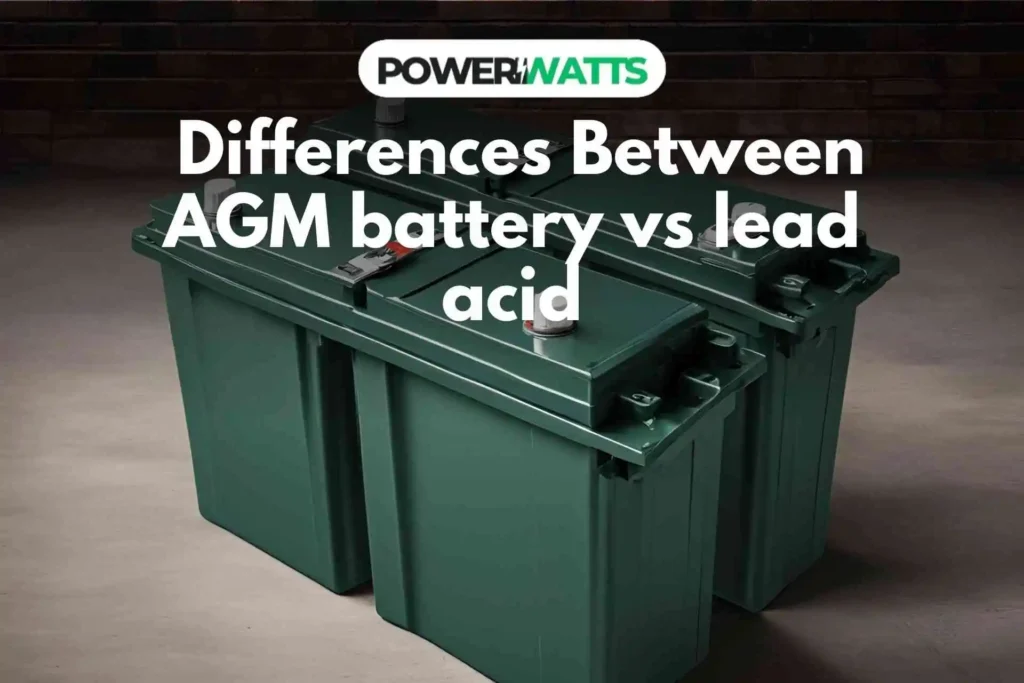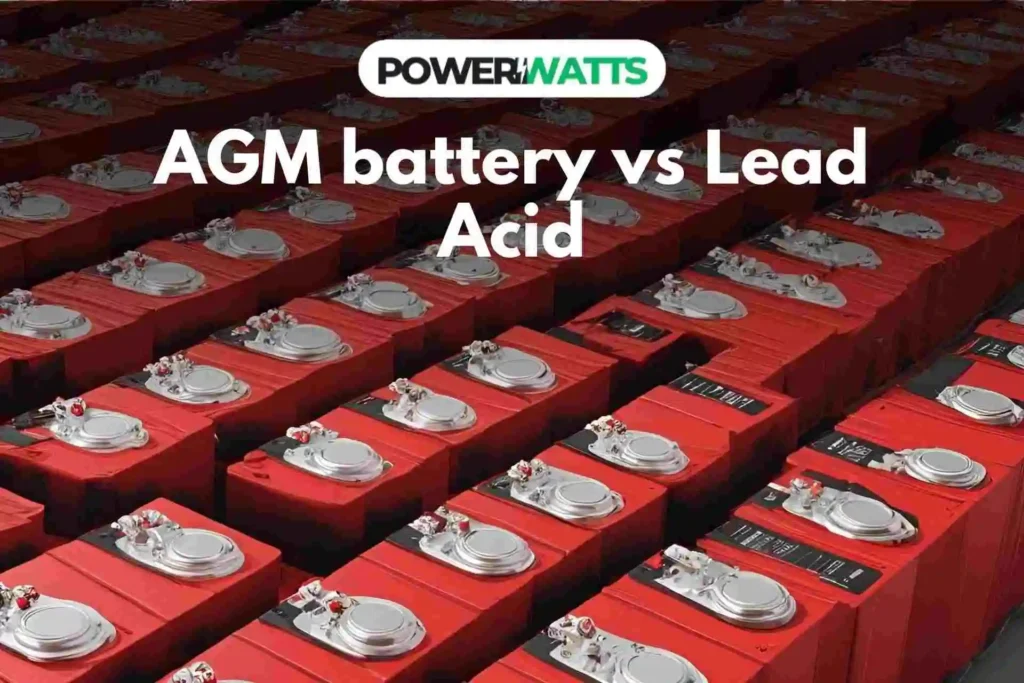Are you fed up with changing batteries and maintaining them? Look no further. Because, this detailed article will explain the main differences between AGM and lead acid batteries and let you choose the right one. Powering your RV, boat, backup system, or car with a trustworthy battery requires knowledge of each type’s advantages and downsides.
Maintenance-free, spill-proof AGM batteries are great for convenience and safety. However, lead acid batteries are cheaper and can sustain larger discharge rates, making them appropriate for repeated high-rate discharges. And, this blog article will explain agm battery vs lead acid so you can make an educated choice.
Ready to unleash power and locate the right battery? Request a quote and let our specialists help. Our service helps you to choose the ideal battery for your requirements.
What does an AGM battery do?
AGM batteries use a fiberglass mat between the lead plates to keep the acid inside the battery sealed. The electrolyte solution is everywhere in this mat because it is held together by capillary action. Because AGM batteries are protected, gases can’t get out and there’s less chance of spills or leaks. The AGM batteries don’t need to be maintained and can be put in any position without needing airflow.
What is a lead acid battery?
Lead acid batteries, which are also called flooded or wet cell batteries, are made up of lead plates that are buried in a liquid electrolyte solution. Separators keep the plates apart, and the electrolyte level needs to be checked and topped off with pure water every so often. However, lead acid batteries need to be serviced regularly to make sure they work well and last a long time.
What are the Pros and Cons of AGM batteries?
Pros:
- No maintenance required
- Design that stops spills and leaks
- Not easily broken by noises and shocks
- The self-discharge rate is lower than that of lead-acid batteries.
- Because gases mix again, it is safer to use in tight areas.
Cons:
- They cost more upfront than lead-acid batteries.
- May need more advanced charging controls to keep it from going overcharged
- Not good for fast charging or high-rate discharge
What are the Pros and Cons of lead acid batteries?
Pros:
- Not as expensive as AGM batteries
- Can handle higher rates of flow
- It is easy to change and widely available.
Cons:
- They need to be serviced regularly, which includes checking and adding water levels.
- If not properly kept, it is likely to rust and leak.
- Not as light as AGM batteries
- Need enough airflow to keep possibly dangerous gases from building up

9 Key Differences Between AGM battery vs lead acid
Are you fed up with changing batteries and maintaining them? We’ll cover the 9 main differences between AGM battery vs lead acid in this detailed guide to help you choose the right one.
Construction
AGM batteries have a fiberglass mat separator between the lead plates. Capillary action suspends the electrolyte solution in this saturated mat. Lead acid batteries, often called flooded or wet cell batteries, contain lead plates immersed in a liquid electrolyte solution. Separators divide plates.
Maintenance
Maintenance is a major distinction between AGM battery vs lead acid. No electrolyte topping or checking is needed with AGM batteries. This makes them suitable for hassle free battery use. However, lead acid batteries need frequent electrolyte checks and filling up. It may take time and expertise.
Leak/Spill Resistance
Spill and leak resistance is another key distinction. AGM batteries are sealed to avoid gas leaks and spills. furthermore, the batteries are safer for use in confined settings for many purposes. The liquid electrolyte in lead acid batteries may spill and leak if not properly managed. So, This may harm nearby equipment and pose safety risks.
Shock and Vibration Resistance
AGM batteries are more shock- and vibration-resistant than lead-acid batteries. They are better for trucks, boats, and off-grid power systems that travel often or are exposed to hostile conditions. However, vibrations and shocks harm lead acid batteries and reduce their lifetime and performance.
Self-Discharge Rate
Lead acid batteries self-discharge faster than AGM batteries. They can hold their charge longer while not in use. However, lead acid batteries self-discharge faster and might fail if left unused.
Safety
However, Safety is paramount when buying a battery. Gas recombination makes AGM batteries safer for confined settings. This makes them preferable for use in low-ventilation regions since they do not produce harmful gases. However, lead acid batteries need appropriate ventilation to avoid gas accumulation which may be dangerous in certain applications.
Cost:
AGM batteries cost more upfront than lead acid batteries. Long-term, its maintenance-free design, and longer longevity may balance the greater initial cost. Lead acid batteries are cheaper and are fit for those who have limited budgets.
Charging Needs
AGM batteries may need more advanced charging management to avoid overcharging. Overcharging might create pressure buildup due to its sealed nature. However, lead acid batteries can withstand greater charging voltages without harm.
Discharge Rates
Lead acid batteries may drain faster than AGM batteries. So, this makes them preferable for heavy machinery and industrial equipment that need frequent high-rate discharges. AGM batteries should not be discharged or charged quickly since this might harm their internal components and shrink their lifetime.
Lithium-Ion vs. Lead Acid: Future Power
Are you fed up with changing batteries and maintaining them? No need to worry because we will explain the main differences between lead acid and lithium-ion batteries, letting you choose the right one.
For almost 160 years, lead-acid batteries have been reliable, durable, and affordable. They store electricity via lead as well as water, and sulfuric acid processes. However, lead acid batteries are hefty and huge for their energy capacity. However, lithium-ion batteries are smaller, maintenance-free, and have a better energy density and temperature tolerance. Regular discharge to 80% may last 10 years and provide 33,000 kWh of energy.
While lead-acid batteries are cheaper upfront, lithium-ion batteries are more convenient, efficient, and long-lasting. I am sure advanced technology and proven performance make lithium-ion batteries the best option. Prepare to unleash power and locate the right battery!
Conclusion
It is important to think about your goals, income, and the type of use you want when picking between AGM battery vs lead acid. AGM batteries are easy to use, safe, and better at handling pressure and noise. This makes them perfect for deep-cycle storage in RVs and boats as well as backup power systems, and UPS systems. On the other hand, lead acid batteries are cheaper and can handle higher discharge rates, which makes them good for uses that need to do a lot of high-rate discharges.
In the end, your goals and the needs of your application will determine whether you choose an AGM battery vs lead acid. If you know the main differences between these two types of batteries then you can make a smart choice. So, why wait Get a Quote for personalized help.


